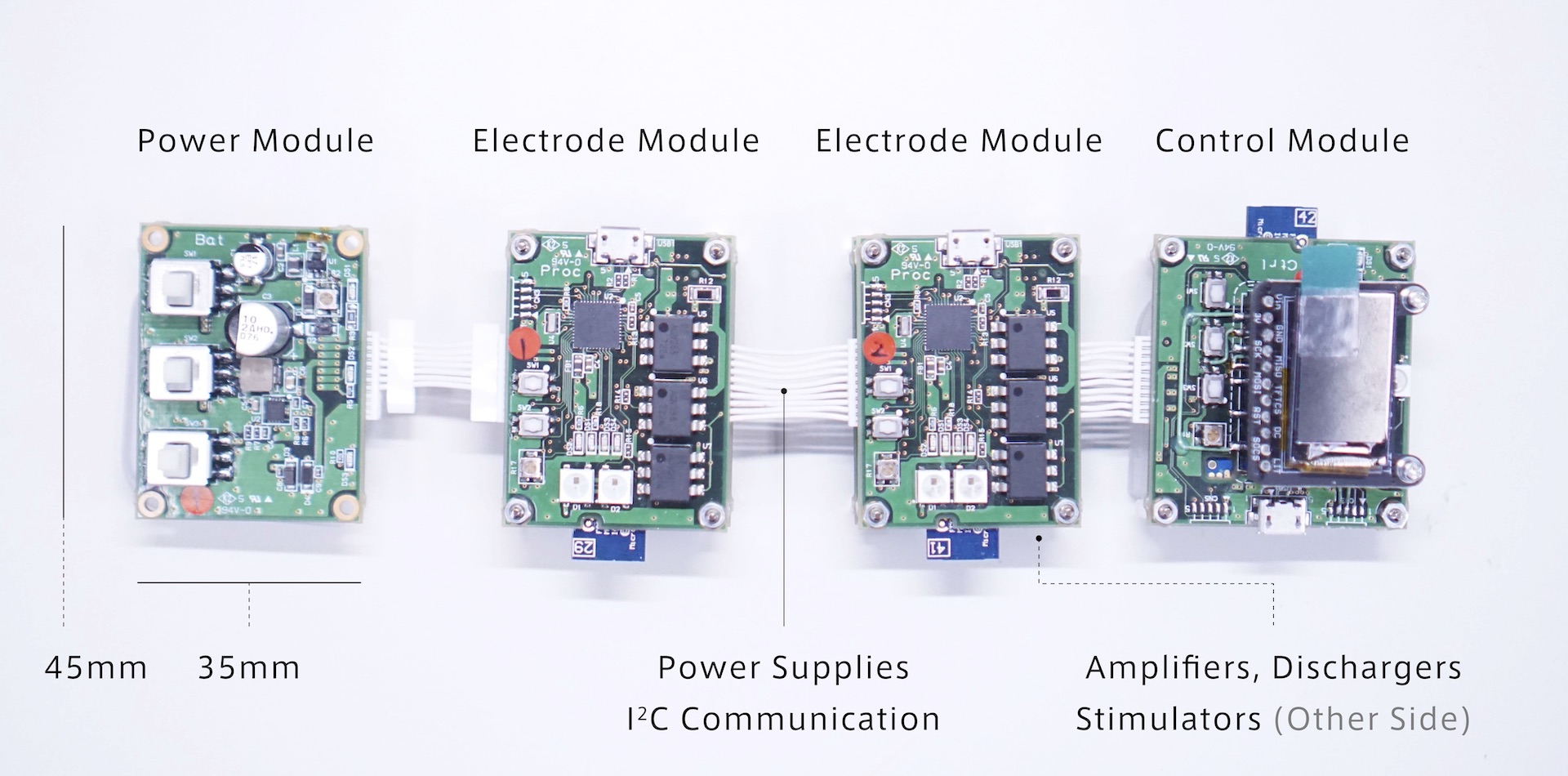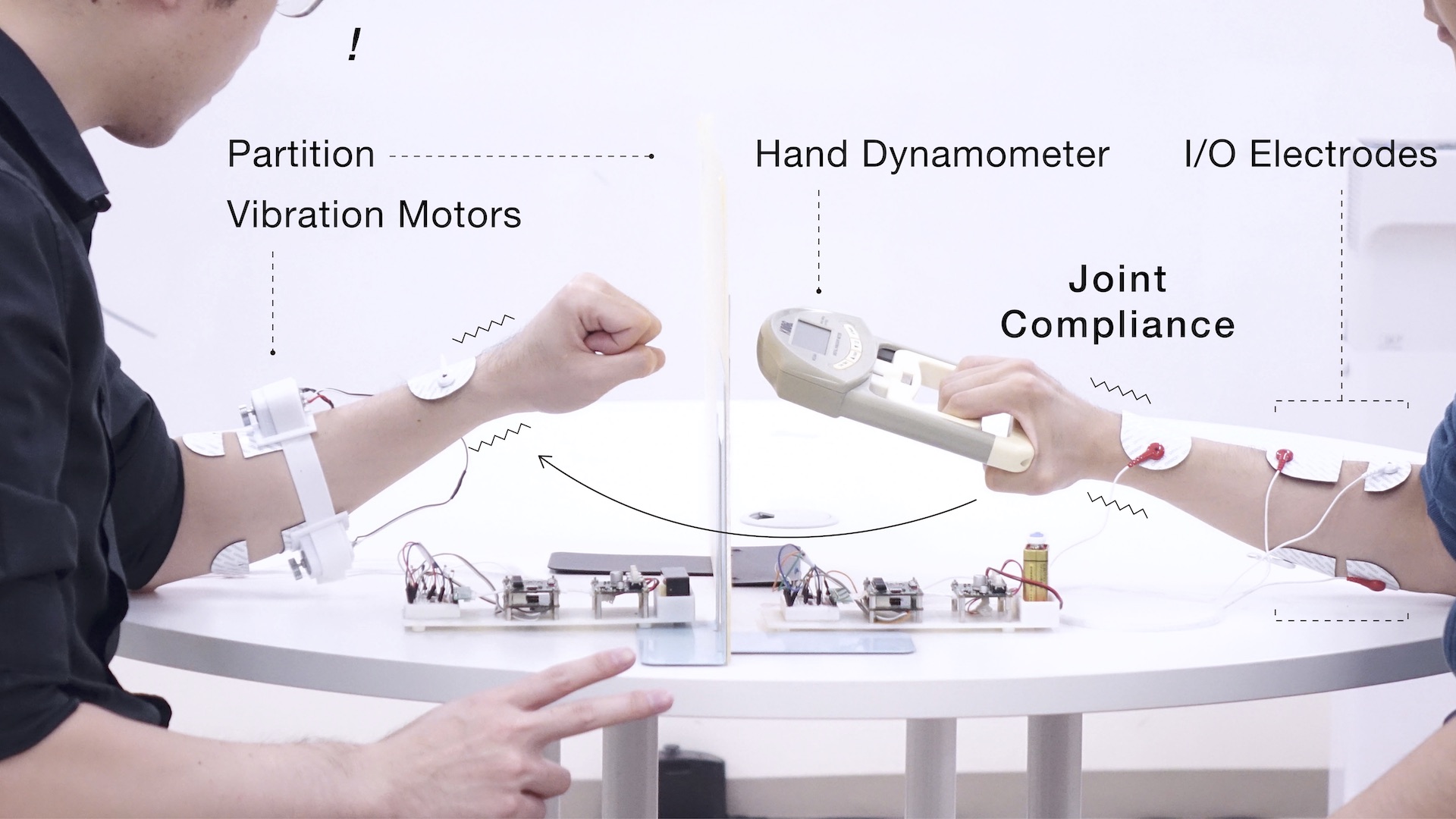Interactive Hand Rehabilitation
Sharing Wrist Joint Stiffness among Therapists & Patients
Perceiving human muscle activity is one of the most essential factors for understanding one’s intention to move the body. There are several situations in which it would be beneficial to perceive another person’s muscle activity. An example is the interaction between physical therapists and patients with neuromuscular disorders during hand function rehabilitation with a pegboard. It is usually difficult to perceive whether the patient is handling the peg with regulated contraction strength and appropriate timing in a visual contact, while grip force control plays an important role in rehabilitations and activities of daily living. Thus, it would be valuable if the therapist is able to perceive the patient’s wrist joint stiffness generated by grasping action. Not only the monitoring but also direct intervention in that of the patient would enhance motor learning regarding object manipulation through visual and proprioceptive feedback.
Interactive Peg Rehabilitation
In this research, we propose a new interaction style for monitoring and intervening in the patient’s joint stiffness by means of biosignal measurement and electrical muscle stimulation (EMS) so that both the therapist and the patient are able to teach and learn their physical conditions through proprioceptive interactions. This allows simultaneous physical intervention and monitoring of the hand activity, enhancing its kinesthetic communication and functional recovery. To achieve this, we developed a pair of wearable devices that are capable of performing simultaneous operation of the electro-myo-graphy (EMG) signals of multiple muscle tissues to estimate the joint stiffness, and the stimulation on multiple muscles to control the wrist joint stiffness.
Publication
Jun Nishida, Keisuke Yagi, Modar Hassan and Kenji Suzuki. 2019. Wearable Kinesthetic I/O Device for Sharing Wrist Joint Stiffness. IEEE EMBC 2019 Full Papers (PDF)
Jun Nishida and Kenji Suzuki, “bioSync: A Paired Wearable Device for Blending Kinesthetic Experience”, ACM SIGCHI Papers & Interactivity, USA, May. 6-11, 2017 (PDF)


